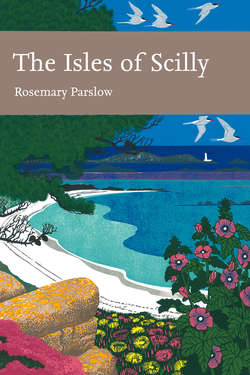Читать книгу The Isles of Scilly - Rosemary Parslow - Страница 34
MEDIEVAL SCILLY
ОглавлениеThe early history of Scilly is shrouded in the mists of time. An archipelago of small islands just visible on a clear day off the coast of Cornwall was bound to seem mysterious and attractive. There are many tales and legends associated with the islands, many of them bound up with tales of giants, Vikings and especially King Arthur. In the absence of written records, however, real history can only be deduced from the artefacts and remains left by the early occupants on Scilly.
There is little material evidence of trade from abroad prior to Roman times, although some finds suggest that the islands were not totally isolated. By Roman times finds of Samian and other wheel-made pottery, pipe-clay figurines on Nornour and Roman coins indicate links with France, elsewhere on the Continent and the Mediterranean (Ashbee, 1974). These contacts were very likely to have been instrumental in the importation of plants – both deliberately for food and accidentally as weed seeds, among seed corn or caught up in goods and packaging – that may have been some of the early colonists of cultivated fields.
Later, during the early Middle Ages, long-distance trade increased between western Britain, Ireland, France and the Mediterranean. Scilly was in an excellent position to benefit from ships calling in for fresh water and supplies, and in return to acquire goods such as amphorae of wine and olive oil from the eastern Mediterranean and wine and pottery from Gaul. A site on Teän was possibly a small trading post at the time (Ratcliffe & Johns, 2003).
During the twelfth century Tavistock Abbey administered the northern part of the Isles of Scilly. At this time a Benedictine Priory was established on Tresco, with small churches on the other islands. This would have been significant in the botanical history of the islands, for the monks were much involved in long-distance trade all around Britain and the Continent and would, deliberately or accidentally, have been another vehicle for the introduction of plants. Scilly produced dried seabirds and fish, which were exchanged for goods from further afield (Ratcliffe, 1992). The monks are credited with the introduction of various herbs, some of which still occur in Scilly, such as soapwort Saponaria officinalis and tansy Chrysanthemum vulgare. They may also have reintroduced elder, and they are said to have brought the first narcissi to Scilly, as they had done already on St Michael’s Mount in Cornwall. Whether or not this is true, it is from those original narcissi growing semi-wild around the former priory that eventually grew some of the flowers that centuries later became the foundation of the bulb industry.
In the early fourteenth century Ennor Castle, on the hill above Old Town, St Mary’s, was held by Ranulph de Blanchminster, who was charged with keeping the peace and who was expected to pay the king an annual tribute of 300 puffins Fratercula arctica or 6s 8d. Apparently puffins counted as fish and so could be eaten in Lent; their feathers were also valuable. What is not clear is whether the ‘puffins’ were actually puffins or Manx shearwaters Puffinus puffinus, which at one time were known as ‘puffins’ (as is suggested by their scientific name). There is a record that during Ranulph’s occupation he imprisoned the king’s coroner for taking away a whale that had been beached on his land and only released him on payment of 100 shillings. In 1337 Scilly became part of the original Duchy of Cornwall when Edward the Black Prince became the first Duke of Cornwall.
